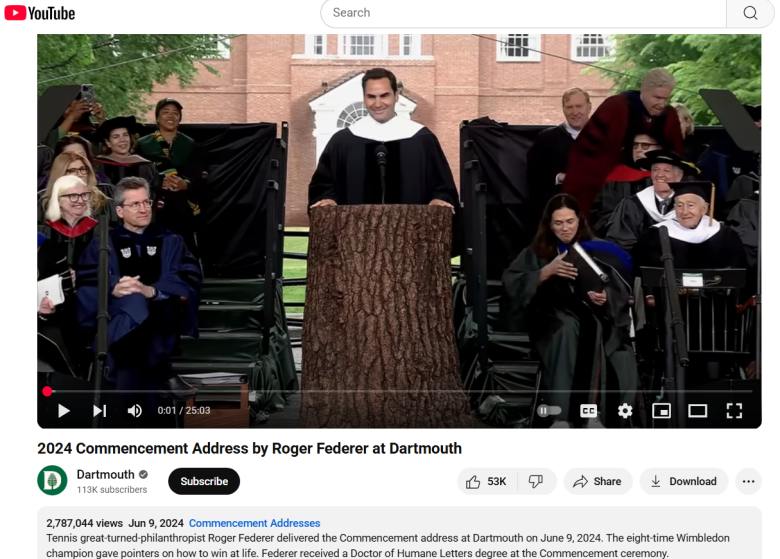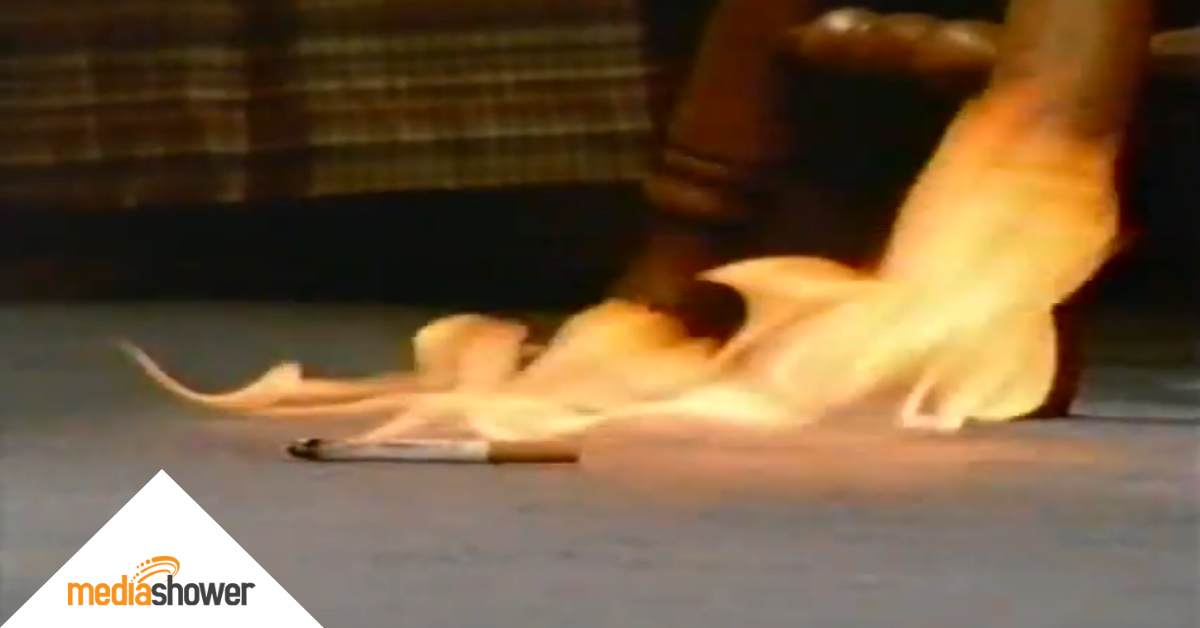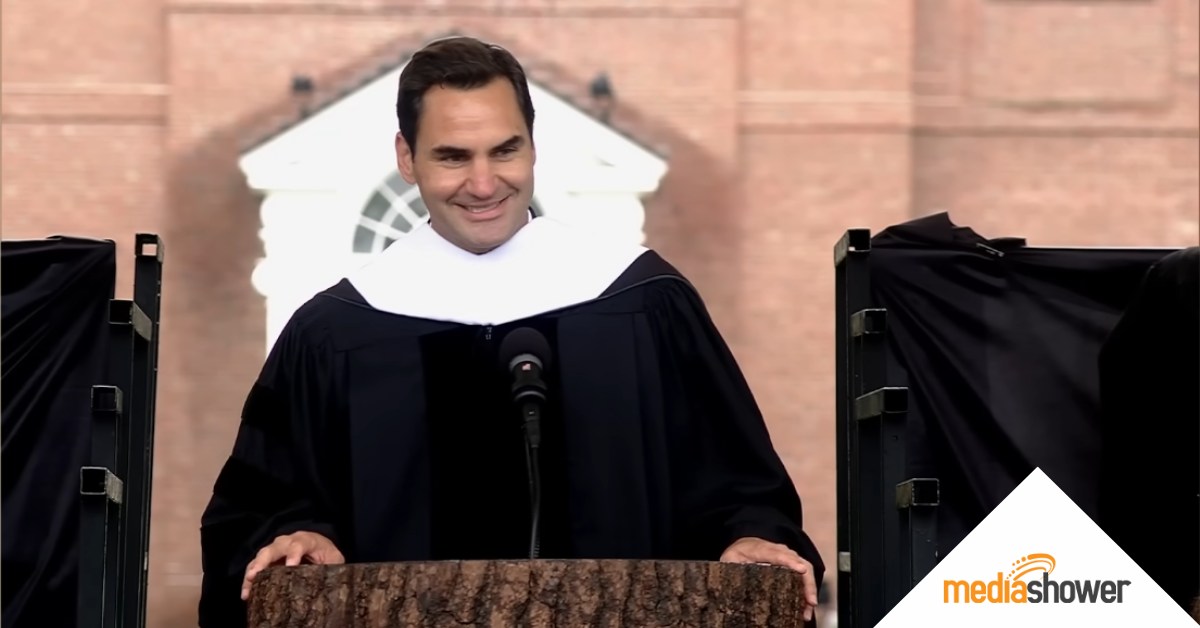
Quick Summary
- Federer turned a graduation speech into a global masterclass on personal branding.
- His candidness, humor, and humility built immediate emotional resonance.
- The speech’s core lessons have deep marketing parallels for brands looking to build trust and longevity.
- Federer proves that authenticity—delivered with polish—can go viral.
A Center Court Moment
Commencement speeches aren’t usually headline-makers. But then, most commencement speakers aren’t Roger Federer.
On June 9, 2024, the 20-time Grand Slam champion took the podium at Dartmouth College and served up more than the typical graduation platitudes. His speech was heartfelt, self-deprecating, and unexpectedly funny. It hit social media like a perfectly placed ace.
Within hours, video clips were racking up views across platforms. Forbes called it “one of the year’s most meaningful commencement addresses.” Federer’s name trended globally, not for tennis, but for talk.
It was the kind of viral moment brands dream about. But it wasn’t flash that did it. It was Federer’s signature mix: poise, humility, and precise execution.
The Setup
Federer opened with a confession: public speaking makes him nervous.
The audience responded with warmth, and he used that moment to deepen the connection. He told stories from the start of his career—about losing, choking, and crying. About being “a brat” on the court. About struggling to manage emotion and expectation.
Each story served a purpose. Federer was shaping a narrative built on growth. By choosing moments of failure and frustration, he invited the audience to see the discipline behind the elegance, the work behind the wins.
He laid down a blueprint for relatability: clear, intentional storytelling that builds credibility through honesty.
And that’s exactly what made his message hit.
A Speech in Three Sets: Federer’s Core Lessons
A lack of public speaking experience aside, Federer didn’t meander. He delivered his message in three clear movements, like a well-paced match. Each one built on the last, layering insight from the heart, without ever sounding preachy or pretentious.
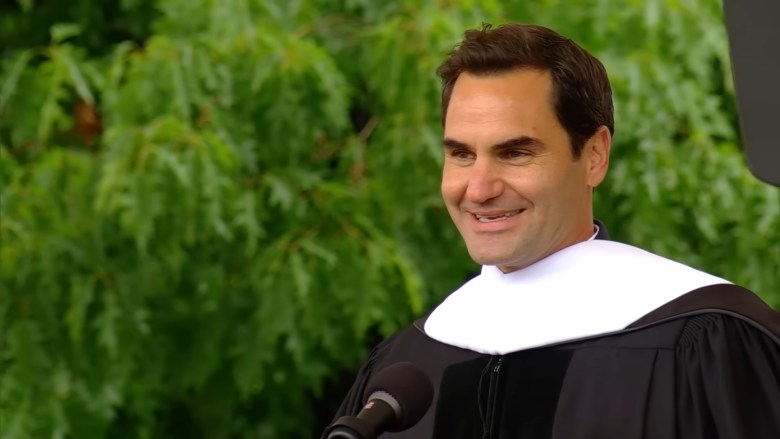
Effortless is a myth
Federer dismantled the illusion that greatness is effortless. “Effortless” is what it looks like after 10,000 hours of hard work.
That line should be engraved in every brand strategist’s notebook. Because too many campaigns chase “cool” over clarity, or polish over substance.
Federer’s story reframes the myth. Real success (the kind that sticks) takes sweat. And the smoother it looks, the more work probably went into it.
“It used to frustrate me when they’d say ‘He barely broke a sweat’ or ‘Is he even trying?’ The truth is, I had to work very hard to make it look easy.”
Win or learn
In Federer’s world, losing isn’t failure. It’s feedback.
He spoke about matches that stung, tournaments that slipped away, and the process of turning those moments into growth.
Developing this skill takes effort, too. Federer didn’t walk off the court after a loss and instantly extract a life lesson each time. He had to learn how to sit with disappointment, analyze his mistakes without self-destruction, and separate ego from growth.
For marketers, this is gold. Campaigns flop. Messages miss.
But brands that treat mistakes as test results, not disasters, build resilience. And resilience builds trust.
Life is bigger than the game
Federer closed by zooming out. Tennis, he said, was what he did—but not who he is. He talked about family, retirement, and what it means to live a good life.
Federer’s legacy will be measured not only by the trophies he won, but also by the way he carried them—without arrogance, without weight. He approached each stage of his career, including retirement, with the same clarity and grace that defined his game.
The branding takeaway? Purpose matters.
Brands with soul (those that stand for something beyond transactions) are the ones that last.
“Like you, I finished one big thing, and I’m moving on to the next. Like you, I’m figuring out what that is.”
A Masterclass In Branding
Federer’s speech resonated beyond the Dartmouth Green, for both what he said and how he packaged it. His delivery was a branding lesson all its own, with techniques any great communicator can study, steal, and serve.
He used humor to disarm
Federer joked about his nervousness. He teased himself about his forehand. He called out the absurdity of giving life advice in a robe.
That humor entertained. It also made him accessible.
For brands, humor can be the secret handshake that turns an audience into a fanbase. When used sparingly and smartly, it lowers defenses and opens doors.
“This is not my usual scene. These are not my usual clothes. Do you dress like this every day at Dartmouth?”
He owned his vulnerabilities
Instead of coming across as invincible, Federer talked openly about insecurity, frustration, and fear.
Authenticity is easy to name but hard to nail. Many brands miss the mark and end up sounding rehearsed or polished to the point of implausibility.
Federer avoided all of that. He didn’t package his pain into a personal triumph story. He just told the truth and made a choice to connect.
Brands that share their flaws or learning curves signal self-awareness and openness to improvement—qualities that earn trust.
He delivered value, not vanity
Federer could have spent 20 minutes listing titles and awards. He didn’t.
Instead, he focused on the audience: their future, their questions, their challenges. His accomplishments were context, not content.
Federer shared what it felt like to lose, to doubt, and not know what comes next. No moral-of-the-story packaging. No “Look how far I’ve come” finale.
That’s a strategy every brand should study. The best marketing isn’t about the brand. It’s about what the brand can do for the customer.
Lasting Impact
Federer’s global fame may have given his viral speech a head start. But he’s not the first celebrity to show up in a robe. Most of those speeches fade, so why did this one stick?
Because virality isn’t magic; it’s mechanics. Here’s what made this speech spread.
Why it went viral
Federer’s speech had the magic trifecta: sincerity, specificity, and surprise.
It didn’t feel rehearsed to death. It wasn’t dripping in branding polish. And it didn’t serve to extend his notoriety as a tennis juggernaut.
Instead, it sounded like one of the world’s most famous athletes pulling up a chair and having a real talk.
That tone of intimacy, honesty, and focus resonates far beyond Ivy League walls.
The long game: Federer’s brand legacy
Since retiring from tennis, Federer has continued to shape his public presence.
His work now spans fashion collaborations, philanthropy, and public appearances that reflect a shift toward leadership, creativity, and calm insight.
His commencement speech fits naturally within this evolution—a continuation of a brand built on consistency, depth, and grace.
For marketers, it’s a case study in strategic brand extension. Don’t chase relevance. Build depth.
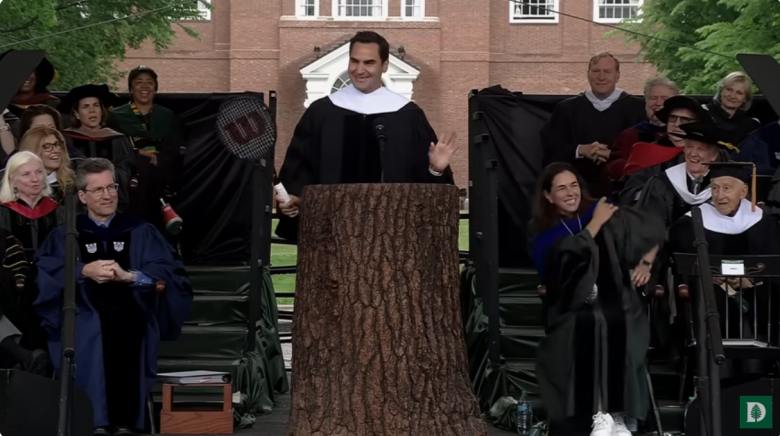
Marketer Takeaways
- Embrace personal narratives. Federer’s stories entertained and built trust. Brands that lead with lived experience win hearts.
- Use vulnerability to build connections. Transparency signals openness and invites engagement.
- Craft messages with broad relevance. Federer spoke to graduates, yes, but also to anyone navigating change. Great campaigns find the universal.
- Mix sincerity with smart humor. A well-placed joke can reinforce a message and make it more memorable.
Media Shower’s AI marketing platform helps you serve ace-level campaigns that are right on target. Click here for a free trial.
